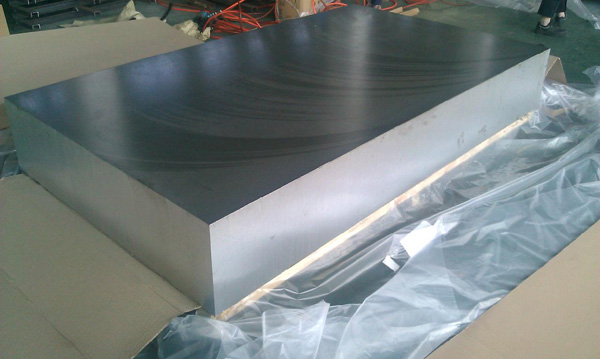Aluminum is a material highly valued across industries due to its incredible durability and versatility. Because there are so many different types of aluminum alloys, it’s important to conduct thorough research before investing in a particular option. However, choosing an aluminum grade for your specific project can be a bit tricky, as aluminum is available in a variety of shapes and grades. The grade you select will depend on a variety of factors, including the level of corrosion resistance you require, overall strength of the aluminum, formability, weldability, and more. Determining how these factors rank among each other will help you best determine which aluminum to choose.

Two of the most popular options when it comes to aluminum are 6061 aluminum and 6063 aluminum. But which is better, 6061 or 6063 aluminum? Read on to learn about aluminum 6061 vs 6063, the benefits and uses of each, and determine which is right for your aluminum extrusion project.
ALUMINUM ALLOY 6061
Aluminum 6061 is a precipitation-hardened alloy, meaning it is strengthened during a heat treatment process that involves the disbursement of particles within the metal’s grain structure, hindering motion and effectively increasing strength and durability. Among its major alloying elements are silicon and magnesium, in addition to elements such as iron, copper, and zinc. Developed in 1935, aluminum 6061 is one of the most versatile aluminum alloy options. This is because it is able to be fabricated by many of the techniques most often used, offering great workability and range of mechanical properties. Further, 6061 exhibits a high level of corrosion resistance, and is highly weldable. Aluminum 6061 is available in numerous versions including tempered 6061-T6 and 6061-T651 grades, as well as pre-tempered 6061-O grade.
Overall, aluminum 6061 is a good alloy choice for projects requiring a stronger material strength or structural support. Some of its most common uses include for the construction of aluminum cans for the packaging of food and beverages, for the construction of small utility boats, as well as for the construction of components of aircraft, such as the fuselages and wings. 6061 is also used for the construction of bicycle frames, motorcycles, firearms, camera lenses, and more.
ALUMINUM ALLOY 6063
Similar to aluminum 6061, 6063 aluminum alloy counts silicon and magnesium as its alloying elements. Aluminum 6063 is widely recognized for its weldability and heat treatability, as well as for its ability to resist corrosion. The uses of aluminum 6063 are not typically as general as 6061, with its primary uses falling within the interior and exterior architectural application fields. Another valuable characteristic of aluminum 6063 is its successful use for aluminum extrusion. This alloy makes possible the creation of complex shapes with smooth surfaces, that can be used for visible elements of premium casework, angles, corners, coves, out corners, bar & face nosing, and architectural trim. In addition to being used for window frames, door frames, roofs, and signage, aluminum 6063 is also used for the fabrication of pipes and tubing, as well as for furniture applications. The specific mechanical properties of aluminum 6063 vary depending on the temper.
COMPARING ALLOY 6061 VS 6063
In comparing the two options of 6061 or 6063 aluminum, it generally comes down to what is more important for the use of the extrusion, strength or finishing options. Aluminum alloy 6063 is commonly used for custom extrusions and has better characteristics for forming, machine-ability, and acceptance of anodized finishing options. When an application requires a higher level of strength, most people will select 6061 over 6063. For example, in comparing aluminum alloy 6061 t6 vs 6063 t6, we know that 6061 t6 has an ultimate tensile strength of at least 42,000 psi and yield strength of at least 35,000 psi. This is compared to the 6063 t6 ultimate tensile strength of at least 28,000 psi and yield strength of 23,000 psi.
When making the comparison of 6061 or 6063 aluminum for your job, it ultimately comes down to the factors that matter most to the integrity and longevity of the product you’re producing. While both score highly in terms of formability, workability, and heat treatability, there are a couple of areas in which one has a slight advantage. For example, when it comes to strength, alloy 6061 has an advantage over 6063. On the other hand, 6063’s use for aluminum extrusion makes it the clear choice for visible architectural aluminum trims and profiles.
Unsure of which alloy is right for you? Contact the specialists at haomei aluminium today to discuss the properties of 6061 or 6063 aluminum, and which option makes the most sense for your aluminum extrusion needs. Eagle Mouldings is a manufacturer, stocking warehouse, and supplier of custom and OEM aluminum extrusions. If we don’t have the extruded aluminum part that meets your specifications, our professionals will help you create and engineer to meet your project requirements.
